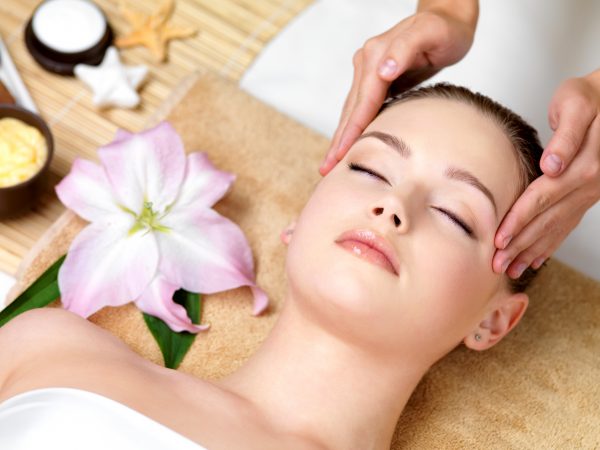
Are you expecting a little bundle of joy, or have you recently welcomed one? Navigating the journey of motherhood brings immense joy paired with inevitable physical and emotional challenges. Prenatal and postnatal massages offer a soothing escape that nurtures both body and mind. Whether preparing for childbirth or adjusting post-delivery, understanding the profound benefits of these massages can transform your motherhood experience into a more comfortable and joyful journey.
Understanding Prenatal and Postnatal Massages
Prenatal massage, often called massage during pregnancy and postpartum massage, is a therapeutic approach designed specifically for expectant mothers. It focuses on addressing the unique needs of pregnant women, such as hormone regulation, stress reduction, and muscle relaxation. This massage helps shift the body’s water, alleviates excess fluid retention, and enhances circulation, contributing to maternal and fetal well-being.
Postnatal massage, or massage after delivery, is tailored to help new mothers recover and adjust physically and emotionally following childbirth. It targets issues like breast pain, stimulates tissues to aid healing, and promotes lymphatic drainage to remove excess fluids. Regular postnatal massages can significantly reduce stress, increase milk production, and offer much-needed pain relief, helping mothers recuperate and enjoy their new journey in motherhood.
Benefits of Prenatal Massage

Stress Reduction and Hormone Regulation
Prenatal massage has been shown to significantly lower stress hormones while boosting mood-enhancing hormones like serotonin and dopamine. This hormonal balance is crucial for maintaining a healthy pregnancy and can reduce the risks of premature birth.
Pain Relief
Many pregnant women experience discomfort in the back, neck, and joints as their bodies adapt to carrying a growing baby. Prenatal massage helps relieve these pains by relaxing tense muscles, soothing sore spots, and improving flexibility and posture.
Enhanced Circulation
Massage during pregnancy increases circulation, which improves oxygen and nutrient delivery to both the mother and the fetus. Enhanced blood flow also helps eliminate toxins and supports the body in managing edema (swelling) by assisting the body in shifting and expelling excess fluid.
Improved Sleep
Expectant mothers often report better sleep patterns due to the relaxation induced by prenatal massage. Massage therapy’s soothing effect relaxes the nervous system, leading to deeper, more restorative sleep.
Preparation for Labor
Regular prenatal massages can enhance muscle and joint function, improve the body’s readiness for delivery, and reduce anxiety through deep relaxation. This helps mothers prepare physically for childbirth and imparts a psychological readiness for the labour process.
Benefits of Postnatal Massage
Relief from Post-Delivery Discomfort
Postnatal massage offers much-needed relief from the physical strains of childbirth. It targets areas of tension and discomfort, such as the back, shoulders, and hips, helping new mothers recover from the demands of labour and delivery.
Reduction of Breast Pain and Tension
Breastfeeding mothers often experience soreness and tension in the chest and breast area. Postpartum massage techniques can alleviate this discomfort by promoting relaxation in the muscles surrounding the breasts and encouraging better milk flow.
Stress Reduction and Hormone Regulation
The hormonal fluctuations that occur after childbirth can contribute to mood swings and feelings of anxiety. Postpartum massage helps regulate hormone levels, promoting a sense of calm and well-being during the challenging postpartum period.
Enhanced Circulation and Lymphatic Drainage
Postnatal massage increases circulation and lymphatic drainage, assisting the body in eliminating excess fluid retention and reducing swelling. Improved circulation also promotes faster healing and tissue repair.
Emotional Support and Relaxation
Beyond the physical benefits, postnatal massage provides emotional support for new mothers. It offers a nurturing environment where mothers can relax, unwind, and connect with their bodies, fostering a sense of peace and contentment during the transition to motherhood.
Takeaway
Prenatal and postnatal massages offer invaluable support to mothers during the transformative journey of pregnancy and childbirth. By incorporating techniques that target specific concerns such as stress reduction, hormone regulation, and pain relief, these massages enhance the overall mom experience, aiding in relaxation and recovery. For expert prenatal and postnatal massage services tailored to your needs, consider Bodycraft Salon’s massage services. Experience the benefits firsthand and embark on a journey of rejuvenation and renewal.
FAQs Around Prenatal and Postnatal Massages
1. How often do you get a prenatal massage?
The frequency of prenatal massages varies based on individual needs and preferences. Generally, a prenatal massage once a month during the first and second trimesters is standard. However, during the third trimester, some may opt for more frequent sessions, such as every two weeks, to address discomfort and prepare for childbirth.
2. Is prenatal massage safe?
When performed by a trained and certified massage therapist, prenatal massage is safe for most pregnant women. However, it’s crucial to consult with your healthcare provider before scheduling a massage, especially if you have any high-risk pregnancy conditions or concerns.
3. What to wear to a prenatal massage?
Comfort is critical when deciding what to wear to a prenatal massage. Most women opt to undress to their comfort level, keeping modesty and relaxation in mind. Your massage therapist will provide draping and ensure your privacy is respected throughout the session. Loose, comfortable clothing is also suitable if you prefer not to undress.
4. When to start prenatal massage?
Prenatal massage can typically begin after the first trimester, around 12 weeks into pregnancy. This timing allows the pregnancy to stabilise and reduces the risk of complications. However, always consult with your healthcare provider before starting any massage therapy during pregnancy.
5. When can I get a massage postpartum?
Postnatal massage can generally begin a few days after delivery once you receive clearance from your healthcare provider. This timeframe may vary depending on the type of delivery and any complications experienced during childbirth. Postnatal massages offer valuable support in the recovery process, addressing physical discomfort and promoting relaxation during the postpartum period.